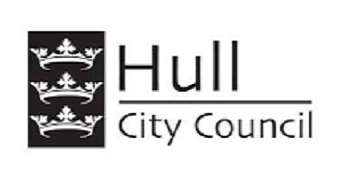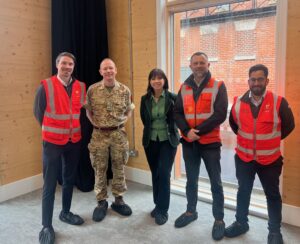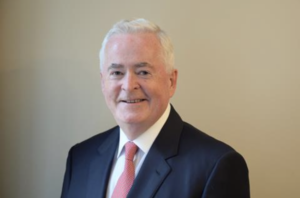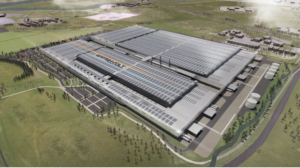Lessons from Australia: Creating liveability

Australian cities are among the most liveable in the world. As Tim Horton explains, linking design with governance is crucial to the country’s success
In Australia there is renewed national interest in cities, in better planning and infrastructure, after years of neglect.
Arguably the reframing of interest started in 2007 with the release by the Australian treasury of an intergenerational report highlighting the trends in demography and immigration – suggesting the size and age profile of Australia’s population was changing. Rapidly. And with impact. Treasury – the same dour class of boffins known the world over – identified that an ageing population had the potential to slow economic growth.
Not long after, an update of the report kicked-started a national conversation on the rate of growth anticipated, posing questions for our capacity to house, feed and employ a fast growing, diverse population. Australia’s Bureau of Statistics forecast the population to grow from 23 million to around 36 million by 2050. Reports, reviews and audits followed.
One in particular revealed that a business-as-usual approach couldn’t accommodate that number whether we liked it or not. Not when the forecast was for a rising number of households due to a falling household size. The whole housing model needed to change. More smaller, centrally located housing close to shops, public transport and services. Less free standing three bedroom homes remote from support and services. But with a market geared to low density housing models, and a largely analogue planning system with no structural incentives for design or construction innovation we couldn’t build fast enough, green enough or cheap enough.
There’s no firm evidence for it but I like to draw a line from this as the ‘identification of the problem’ to a major milestone in 2009 that represents Australia’s first step back after the ‘years of neglect’.

Government House in Adelaide
SETTING CRITERIA FOR LIVEABLE CITIES
OK so Australia’s a Federation, right? This means we share a state-based model of government which sits between local councils and the national government. Coordinating the priorities of national and state governments occurs at what we call the council of Australian governments (COAG); a regular meeting of all state premiers and the prime minister. In December 2009, COAG agreed a national criteria for future strategic planning of capital cities.
The criteria was impressive and diverse, including:
1. Capital city strategic planning systems should be integrated across government agencies;
2. They should be publicly accessible and be clear in their hierarchy, address nationally-significant policy issues including: population growth and demographic change, productivity and global competitiveness, but also social inclusion, health, liveability, and community wellbeing, housing affordability
3. They should strengthen the networks between capital cities and major regional centres
4. They should provide for planned, sequenced and evidence-based land release including a balance of infill and greenfield development;
5. They should provide an effective framework for private sector investment, innovation and implementation.
6. And for the first time, encourage world-class urban design and architecture.
With this, cities were back on the agenda. Criteria were agreed and states required to develop 30 year strategic plans for their capital cities to determine how infrastructure spending would be allocated.
South Australia’s response to COAG’s criteria was fast out of the blocks, and the most genuinely ambitious of any state. A 30-year plan for Greater Adelaide identified a polycentric urban form framed around 14 transit oriented developments. Renewable energy, environmental, transport, water and social targets were embedded in the plan. The plan is framed around a recurring theme – of a ‘new urban form’ shifting from fringe development, to focus on infill in established and well serviced communities. Over the next 30 years 70% of all development is to be infill, not greenfield. Why? Well, as Mike Rann, former premier of the state of South Australia, puts it; ‘We want the vast majority of new dwellings to be within walking distance of public transport.
‘To achieve this we will collocate medium and high density residential housing, major retail and service outlets and major employers around railway and tram stations and bus interchanges. This approach will revitalise 14 urban areas, maintain village integrity and provide the critical mass of population needed to make the upgrading of infrastructure cost effective over the life of the plan’

Adelaide’s ‘new urban form’ focuses on infill in established communities rather than new development
The government of the time also knew this was not a planning exercise alone but that a symbiotic link existed between design as a means of imagining a more sustainable liveable urban future, and governance as the mechanism to implement it. Here, design is understood as a tool for problem solving and generating solutions for the delivery of public services; the design of process and policies to support great ‘product’; whether it’s regional infrastructure, great public space or the housing we need.
This led to the establishment of Australia’s first state-based independent, multi disciplinary agency intended to draw together players in the built environment, research sector and government agencies, The Integrated Design Commission SA . Since opening its doors in July 2010, the commission has attracted interest from interstate and overseas for the unique ability to bring design-based methods to problem solving.
BUILDING A COLLECTIVE VISION OF PLACE

The 5000+ scheme asks people to imagine their city not as it is, but as it could be
Among a number of initiatives, its flagship project has been the Integrated Design Strategy for Inner Adelaide – Australia’s only capital city strategic planning process conceived as a partnership between the Australian government, key state ministries and local councils. Its chief aim is to develop a new, design-led model for city shaping in Australia. It’s shown how to connect COAG’s nine criteria to state government objectives and local council targets. Not separate and competing, but interdependent and mutually reinforcing. The project is given a working title based on the central city postcode, 5000.
Now 5000+ is prototyping a new way to dynamically engage people in ideas for their communities. We call it ‘intelligent engagement by design’ where the research and ideation of the design process is merged with what is so often separated out as a specific window of ‘consultation’ on policy development. Central to this is design leadership from built environment professionals, researchers and thinkers, creatives and others operating from a published and accessible evidence base. It operates on a principle that our collective vision for a place should be the basis for a new set of rules based on new information, in preference to today’s cities where yesterday’s rules tend to limit the scope and potential for change.
Critically, any success in the 5000+ project can be attributed to the collaborative partnerships it has promoted. Along the way, we’ve engaged with around 1000 experts from sociology, education, climate and environment, design, planning, development, government and more. An almost open-source approach means video and web has led the sharing of research and events resulting in around 32,000 video views. And in just 12 months we’ve seen over 179,000 online interactions. This along with night time talks to town halls and resident groups, student competitions and work on government work groups.
As Mike Rann puts it, 5000+ is asking people to see their city not as it is but how it could be. Significantly the overwhelming response was that people want more integrated decision making, explained better at the start. Something universally applicable, I suspect.
Australia’s model is far from perfect and there are some signs of weakening resolve just as capital city plans are beginning to form. But any process of change needs multiple drivers to combine in order to create the momentum for sustained energy and impact. Let’s hope we stay the course down under.
- Anyone interested in knowing more about Mike Rann’s own interest in cities should check out his lecture on ‘Revitalising Cities’. A tour de force on the renewed interest in cities.














I am a bit torn by this repeat finding. As an employed, educated Melbournian living in the inner city, there’s no better place to be. But we must ask, ‘for whom is the city liveable?’
House and rental prices are among the highest in the world and there is a rising gap between rich and poor evidenced in this recently released report card on Australia. It is cause for alarm, not praise – http://www.socialinclusion.gov.au/news/release-key-social-inclusion-report-how-australia-faring
For example, 5% (or around 640,000) of working age Australians continue to experience multiple and entrenched disadvantage; we continue to have the 4th highest rate of children living in jobless families in the OECD; and income inequality has increased steadily since the mid-1990s.
We run a NFP for the homeless in the very heart of Melbourne, with huge demand, poverty, mental illness and high levels of hunger. Food security is also a big issue in this great food city.
That said I also work on a large community infrastructure project taking a place-based, whole of government approach to renewal, providing a much better model of resilience and joined up approaches to address multiple supports. This is a pathway that could spread this ‘liveability’ rating to so many more currently being left behind in an economy that is not nearly as strong as the government presents.
Locational disadvantage is entrenched and neglect of the major infrastructure to boost these areas will continue to see high youth unemployment, jobless families and low educational and health outcomes an ongoing pattern in these outer metropolitan communities around Melbourne.
How interesting, and how similar things appear to be here in the UK: widening inequality (and inequity); (much) better living for those at the top of the tree; stagnation, or reducing standards of living for those in the middle and at the bottom. Interestingly, though, is that here counter-urbanization continues apace, with small country towns growing very fast (in many cases) which – simplistically – makes for less affordable housing for locals, changes to the local economy etc. All this coupled with a trend towards centralization rather than the ‘localism’ that is the standard mantra of central government politicians these days. To judge from the really good liveability stories about Australian cities, planning is improving. Is this down to the more local nature of your state system/government, I wonder, which appears similar in some ways to the (now out-of-favour) regional approach which we had had for a few years? I was in Australia a couple of years ago (visiting friends in Perth, Adelaide and Canberra). Although the cities were buzzing, the same couldn’t be said for some of the country towns (sort of the opposite impression from here).
Lots of good practice/experience to share, I suspect!